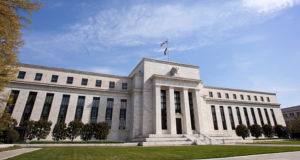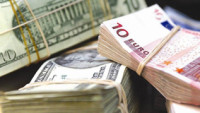 European markets underwent a broadly positive session yesterday with the CAC 40 setting a record high, while US markets finished the day mixed with the Nasdaq 100 sliding back, the S&P500 finishing flat, and the Dow finishing higher.
European markets underwent a broadly positive session yesterday with the CAC 40 setting a record high, while US markets finished the day mixed with the Nasdaq 100 sliding back, the S&P500 finishing flat, and the Dow finishing higher.
As we look towards today’s European market open the focus today will be on the spillover effects of last night’s quarterly earnings numbers from Microsoft and Alphabet, as well as the latest inflation numbers from France and Germany and today’s Fed rate decision.
Yesterday’s Q4 GDP numbers from Europe’s four biggest economies may have tempered some of the recent market enthusiasm that the ECB might be compelled to bring forward the prospect of a rate cut from the current consensus of June, given that better than expected data from Italy and Spain prevented the bloc from slipping into a technical recession.
We’ve also heard from several ECB policymakers in recent weeks that, particularly the likes of Joachim Nagel from the German Bundesbank as well as Robert Holzmann from the Austrian central bank who both pushed back on the idea of an early rate cut. There have also been some dovish voices like Mario Centeno of the Portuguese central bank who have argued that the ECB shouldn’t wait, but the consensus has been not to expect much before June.
This thinking might be shifting if yesterday’s comments from Joachim Nagel are any guide, when he indicated that he is convinced that the ECB has tamed the “greedy beast” of inflation. This softening of tone from one of the ECB’s most notable hawks could signal that an April rate cut from the ECB is becoming much more probable.
Today’s flash inflation numbers for January could reinforce this shift in thinking if as expected the big jump in the December numbers subsides when the latest French and German CPI numbers are released today.
French CPI is expected to slow from 4.1% to 3.6% in January with the month-on-month figure expected to decline by -0.1%.
German CPI is expected to slow from 3.8% to 3.2% with the month-on-month figure expected to decline by -0.2%.
Having seen the ECB keep rates on hold last week, today is the turn of the Federal Reserve where we could see the central bank look to put a pin in the idea that a March rate cut is coming. That’s not to say the Fed will rule the idea of rate cuts coming, simply that March is too soon for a data dependant central bank.
Since Powell’s December press conference when he admitted that the committee had discussed rate cuts only 2 weeks after dismissing the idea at the beginning of December markets have decided that March is a live meeting.
In December the FOMC returned the 2024 dots to 4.6% back to where they had been in September, while forecasting core PCE to decline to 2.4%. Having signalled the death of higher for longer the debate has now switched to when rate cuts are likely to begin, with the markets running away with the idea that we could see the first cut in March.
While several major banks have signalled that the Fed could well set the scene for just such a move at today’s meeting, the idea that the US economy needs a rate cut now comes across as fanciful when you compare its economy to that of Europe.
Last week it was revealed that the US economy grew at 3.3% in Q4, well above forecasts of 2%, with the US consumer still looking resilient. Yesterday consumer confidence rose to its highest level in 2 years while in December the number of job openings rose rebounded to a 3-month high.
Today’s ADP report is expected to show the US economy added another 150k jobs in January, slightly down from the 164 in December, with the FOMC likely to take note that while inflation has been slowing a resilient jobs market could prompt a rebound in wage growth, or at least create a floor for it.
As such it would be surprising if the Fed were to signal a cut in rates in March although they might well open the door to one on Q2, however they will also be keen to temper the markets idea that we could see as many as six, which was being priced earlier this month.
Bond markets have already tempered their enthusiasm for a March rate cut with 10-year yields back above 4% while 2-year yields have rebounded from lows of 4.12% earlier this month to be back above 4.3%.
If the Fed is minded to deliver a rate cut in March, and temper rate expectations for this year, then today is the perfect opportunity to signal its intention, or prick the markets enthusiasm once and for all.
EUR/USD – continues to look a little soft after slipping briefly below the 1.0800 area on Monday, raising the prospect that we could see a move towards the 1.0720 area. Resistance at the highs last week at 1.0930 and behind that at 1.1000.
GBP/USD – slipped briefly below the 50-day SMA yesterday but remains above support at the 1.2590 area. We need to get above 1.2800 to maintain upside momentum and target the 1.3000 area.
EUR/GBP – rallied to the 0.8570/80 area yesterday before slipping back. While below this resistance the risk remains for a move towards 0.8470. Above 0.8580 potentially targets the 0.8620 area.
USD/JPY – currently in a range between the recent highs at struggling to move back through the 148.70/80 area for the time being, with support at the 146.65 area which saw the US dollar rebound from last week. Above the 148.80 area potentially opens a move towards 150.00.












